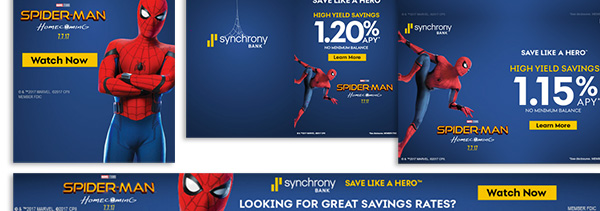These days, people expect to see ads and corporate logos pretty much everywhere. It’s generally accepted as a normal part of life. Advertising, of course, helps subsidize the cost of much of the content we receive on TV, online, and in print. We accept that our sports stadiums will be named after large corporations, and that the next big concert tour will be sponsored by a soft drink. It’s just how our economy works.
But even with marketing so ubiquitous in our society, should some places be off limits? Can marketing go too far? When it comes to marketing in schools, the debate rages on.
It’s not a new thing for companies to sponsor kids’ activities. Local businesses have paid for little league uniforms for generations. But with budgets for education and extra-curricular activities being cut more and more, schools are increasingly turning to large brands like McDonald’s, Coke, and Target for funds in exchange for direct marketing access to the students.
These corporate partnerships are becoming more common in schools across the country. But what are the costs? Who benefits most?
Since we’re in the midst of back to school season, we thought we’d take a look at the issue from both sides.
First of all, most schools are perpetually in need of money, and corporations tend to have a lot of it. Which means companies can provide much-needed funds for arts programs, clubs, and other extra-curricular activities that are usually fighting for their lives. These funds pay for things like sports equipment, uniforms, scoreboards, and travel expenses. With education budgets being slashed each year, corporate sponsorships help struggling programs stay afloat—giving students opportunities they may not otherwise receive.
Corporations also help raise funds by providing turnkey fundraising programs. With these programs, the school sells a company’s product in exchange for a percentage of the proceeds, giving them extra funds to direct wherever they’re most needed.
For corporations, this arrangement is usually a pretty good deal. For a modest investment, a company can begin capturing customers at a young, impressionable age. They’re often able to negotiate exclusive rights to market in a school (only Pepsi products in the vending machines, for example) so there’s less competition for their brand. And students tend to be less resistant to marketing at school since the messages are often integrated into the environment, making them more effective. Is addition, students are a captive audience that’s forced to see the same messages every day, often several times per day. The constant exposure to certain messages increases the likelihood that students will develop long-term preferences for those brands.
Vending machines can provide another source of extra funds—and another challenge for schools and parents. Often filled with soda and candy, vending machines increase the temptation for junk food and sugary drinks. While they provide some supplemental income for schools, they also undermine the healthy eating lessons taught at home and in health classes. And even if a school doesn’t directly promote or endorse the purchase of these products, the mere presence of the vending machines validates them, communicating a mixed message. To combat this, many schools are seeking out healthier vending machine offerings, although the availability usually depends on what types of products are sold by a particular corporate sponsor.
So are all these things a better deal for the companies than the students? It’s debatable. While the students have to deal with a greater exposure to marketing messages, they benefit from the extra funds that keep certain educational and after school programs going. And advertising is something that children and teens are far from immune to anyway. Marketing messages are virtually everywhere. So is the fact that they see ads at school such a big deal? Is the higher exposure to brand logos and ads a small price to pay when compared to the benefits the students receive? Or should schools be off-limits to marketing? Should schools be places that are free of corporate influence?
Some say having marketing messages in schools can be a good thing. Proactive educators can use the school context as an opportunity to teach students about the marketing messages they see around them, especially in the case of younger students. In a controlled environment, students can be taught to experience marketing messages in a healthy way, to learn how marketing works, and to understand how to interpret the flood of ads, logos, and messages inside the school environment and out. In this way, students can be better prepared to process the types of marketing messages they experience elsewhere throughout their normal, everyday lives.
Another thing to consider is how much benefit the schools actually receive from these brand partnerships. Research shows that vending contracts only yield the school an average of $2 to $4 per student per year. Two-thirds of schools earn nothing from their branded fundraisers. And those scoreboards and equipment the schools get from corporations often include brand logos, making them in essence a large billboard. So even though the students do see some benefit, is it enough to justify the effects of the advertising messages? On the other hand, since we’re all used to seeing marketing messages everywhere anyway, isn’t a Coke logo a small price to pay for a brand new scoreboard?
To us, it seems that if a school approves the marketing of an unhealthy product, that school could use the situation to teach students a lesson about nutrition, exercise, and eating sugary treats in moderation. If a brand sponsor is selling wearables, schools could teach a business lesson about how marketing and commerce work together to fund activities the students love. Instead of quietly assimilating these brand messages and products into the school environment, educators have an opportunity to impart real-world lessons that students can learn from and apply to their lives going forward.
So what do you think? Is marketing in schools good or bad? Does it favor one side or the other? Is there a way to embrace it responsibly, so both sides benefit equally? Please share your opinion in the comment section below. We’d love to hear from you!
![cat[&]tonic](https://cat-tonic.com/wp-content/uploads/candt_logo-rw.png)




